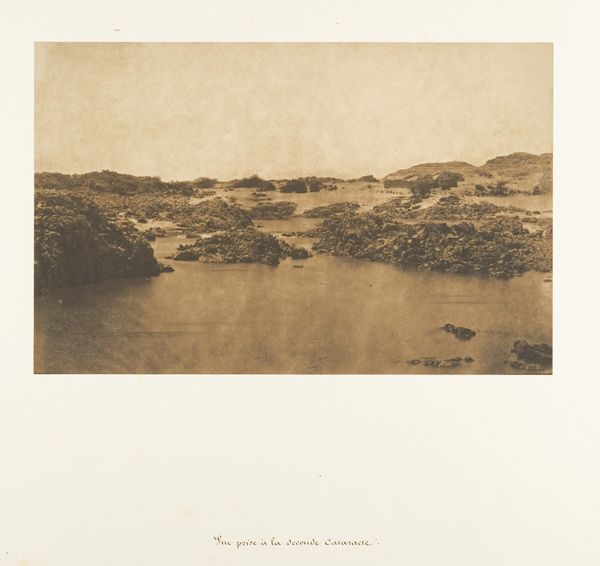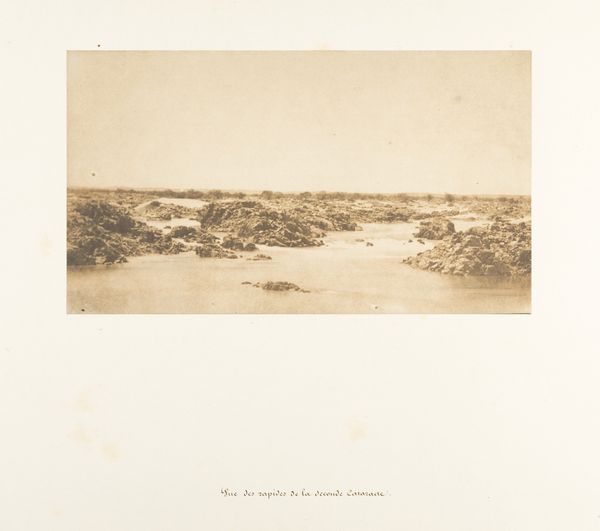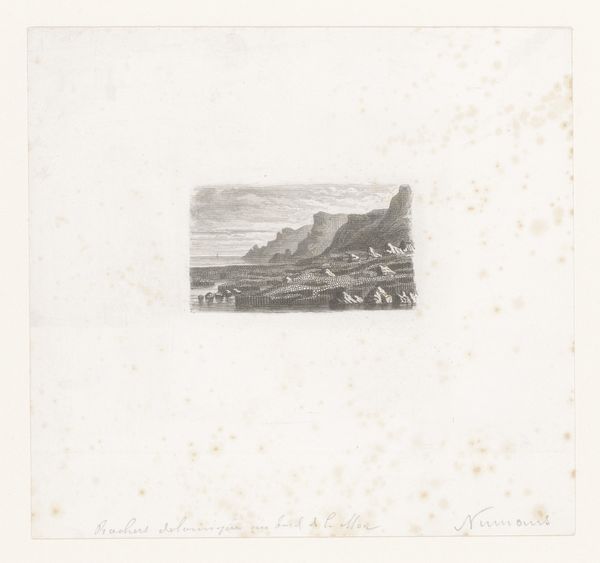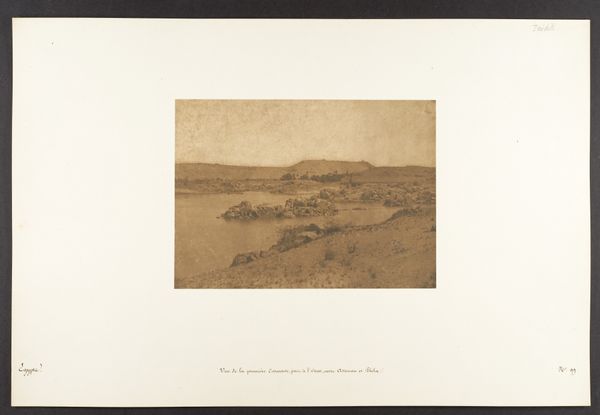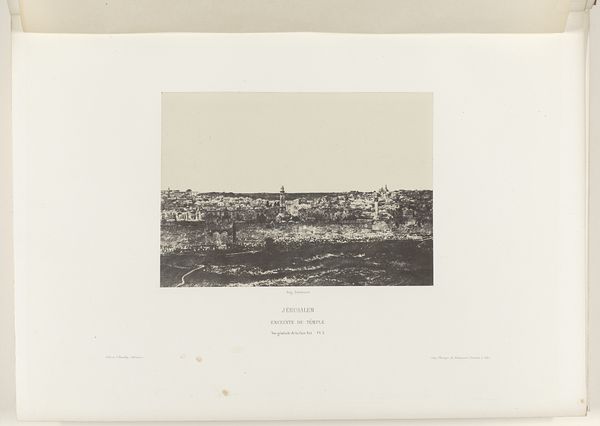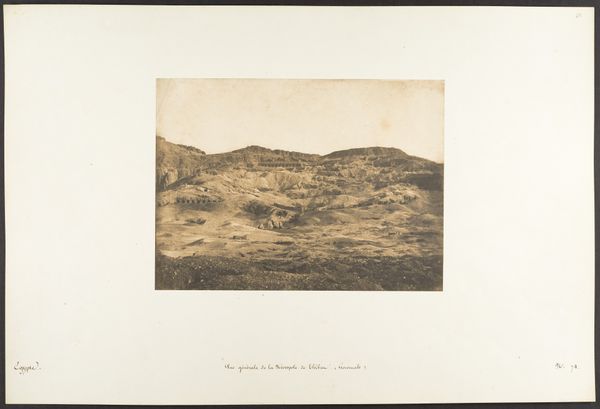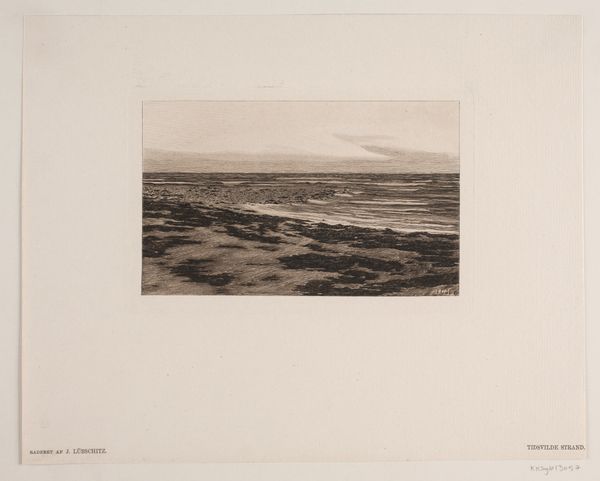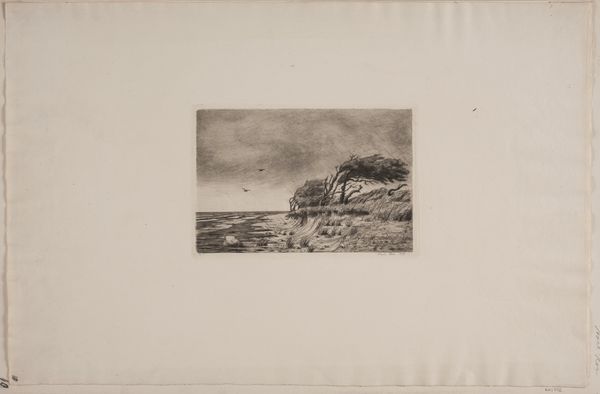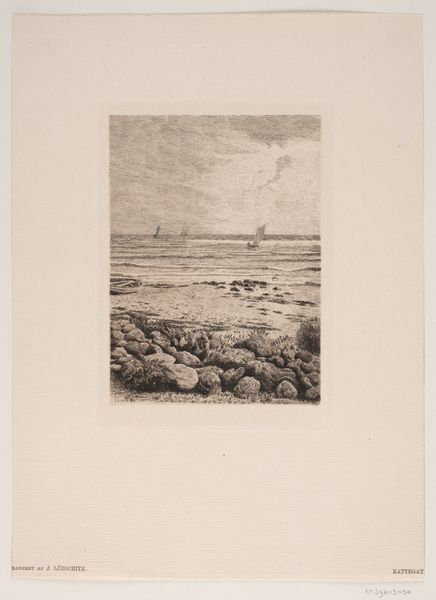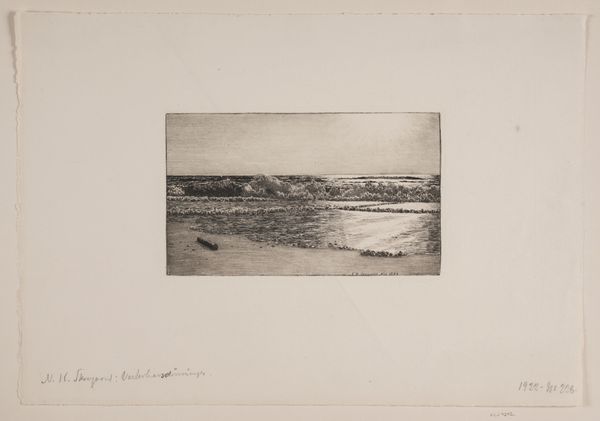
daguerreotype, photography
#
landscape
#
daguerreotype
#
ancient-egyptian-art
#
photography
#
romanticism
#
orientalism
Dimensions: Image: 6 in. × 8 7/16 in. (15.2 × 21.5 cm) Mount: 12 5/16 × 18 11/16 in. (31.2 × 47.5 cm)
Copyright: Public Domain
Maxime Du Camp captured "Batu-el-Hadjar. Vue prise à la Seconde Cataracte" using a calotype, a photographic process, in the 19th century. The image presents a seemingly barren landscape dominated by rocks and water. The scene evokes a sense of primordial desolation, reminiscent of ancient creation myths where land emerges from water. This motif of emergence, deeply embedded in the human psyche, appears across cultures from the Babylonian "Enuma Elish" to the biblical Genesis. The rocks, stark and imposing, symbolize endurance and the passage of time. Water, the source of life, here appears almost stagnant, suggesting a moment of suspended animation. This interplay between water and stone taps into our collective memory, echoing themes of creation, destruction, and renewal. Du Camp's photograph captures more than just a landscape; it captures a moment pregnant with symbolic weight. The image has a powerful force, engaging viewers on a subconscious level. This cyclical progression resurfaces and evolves, taking on new meanings in different historical contexts.
Comments
No comments
Be the first to comment and join the conversation on the ultimate creative platform.
